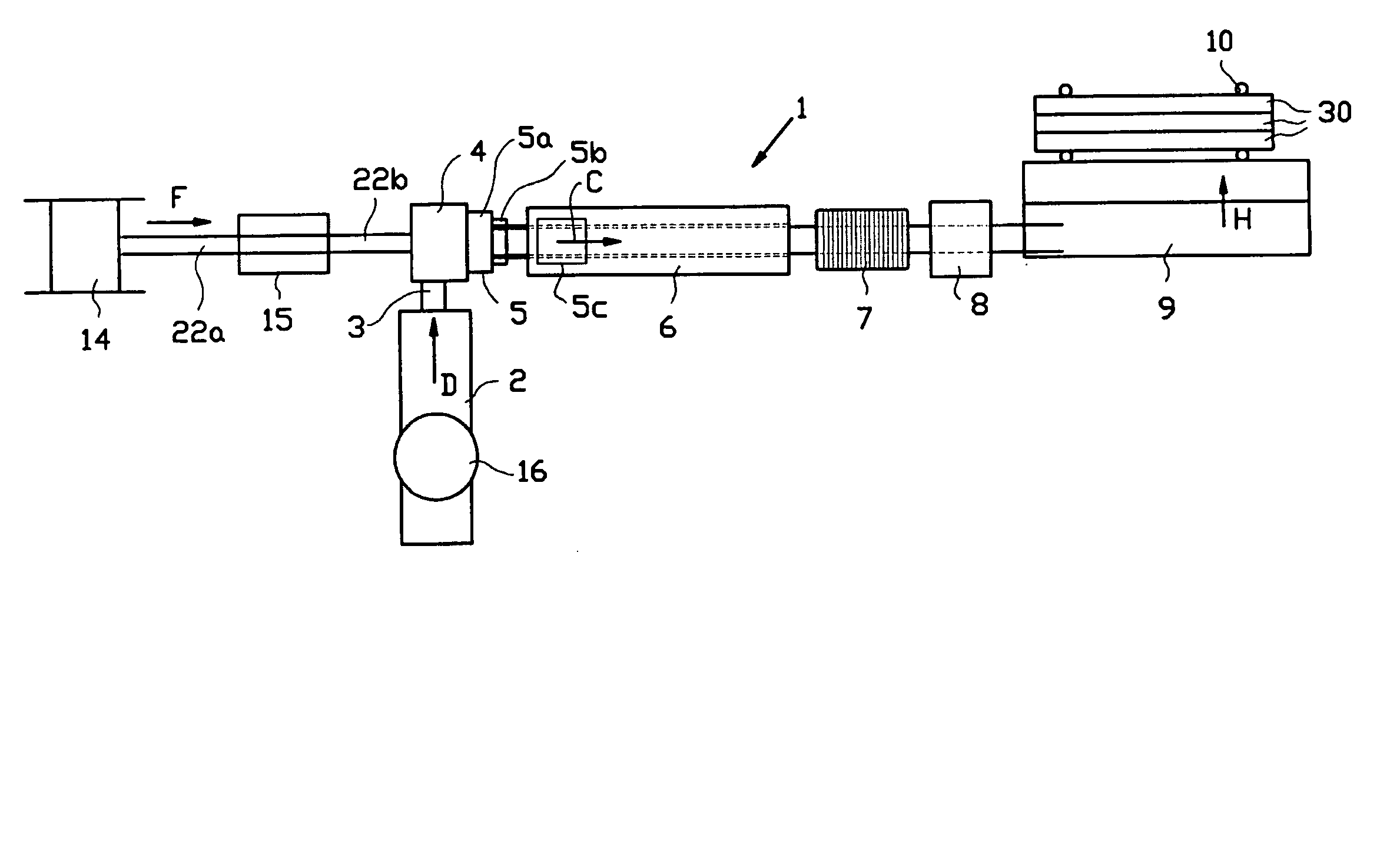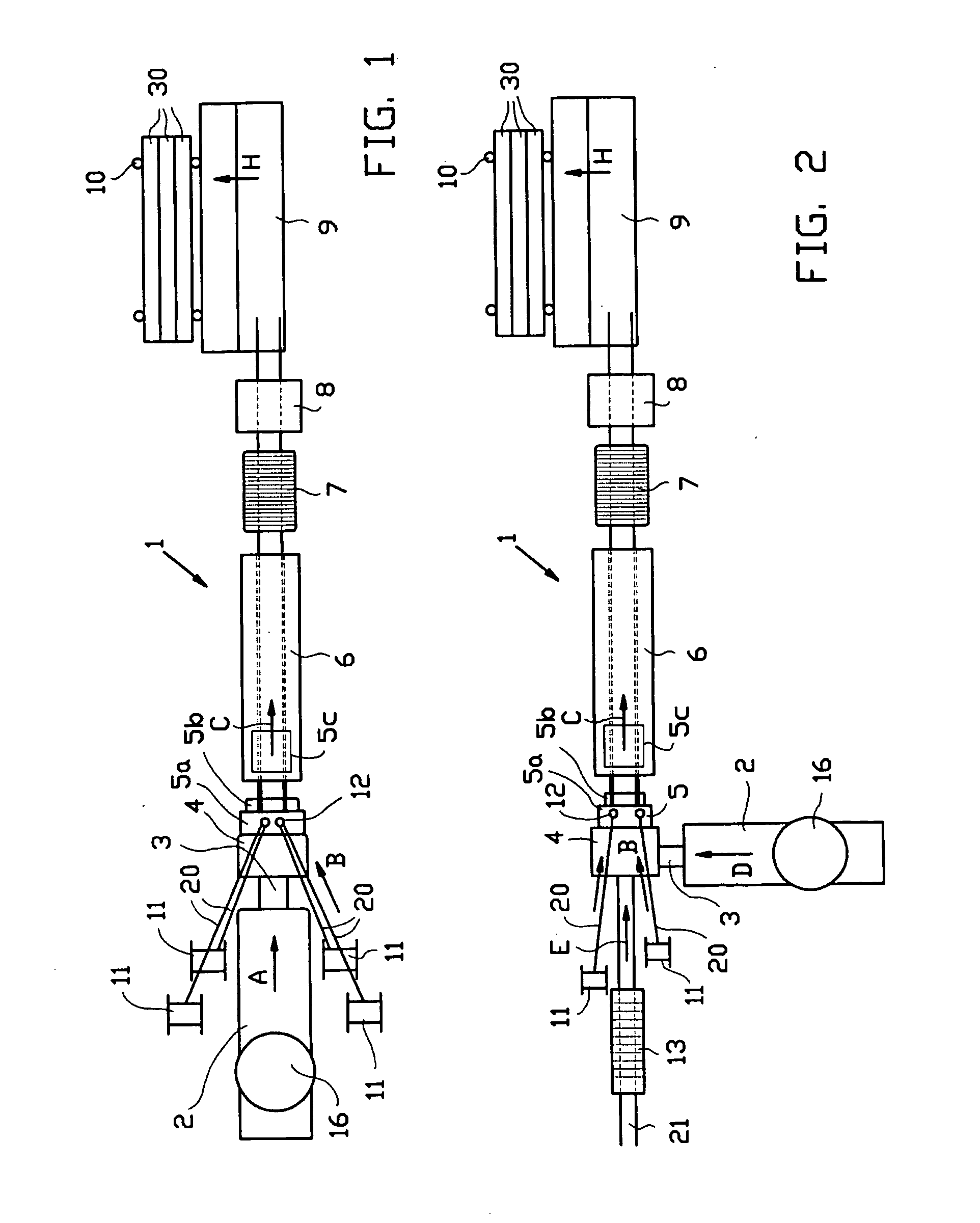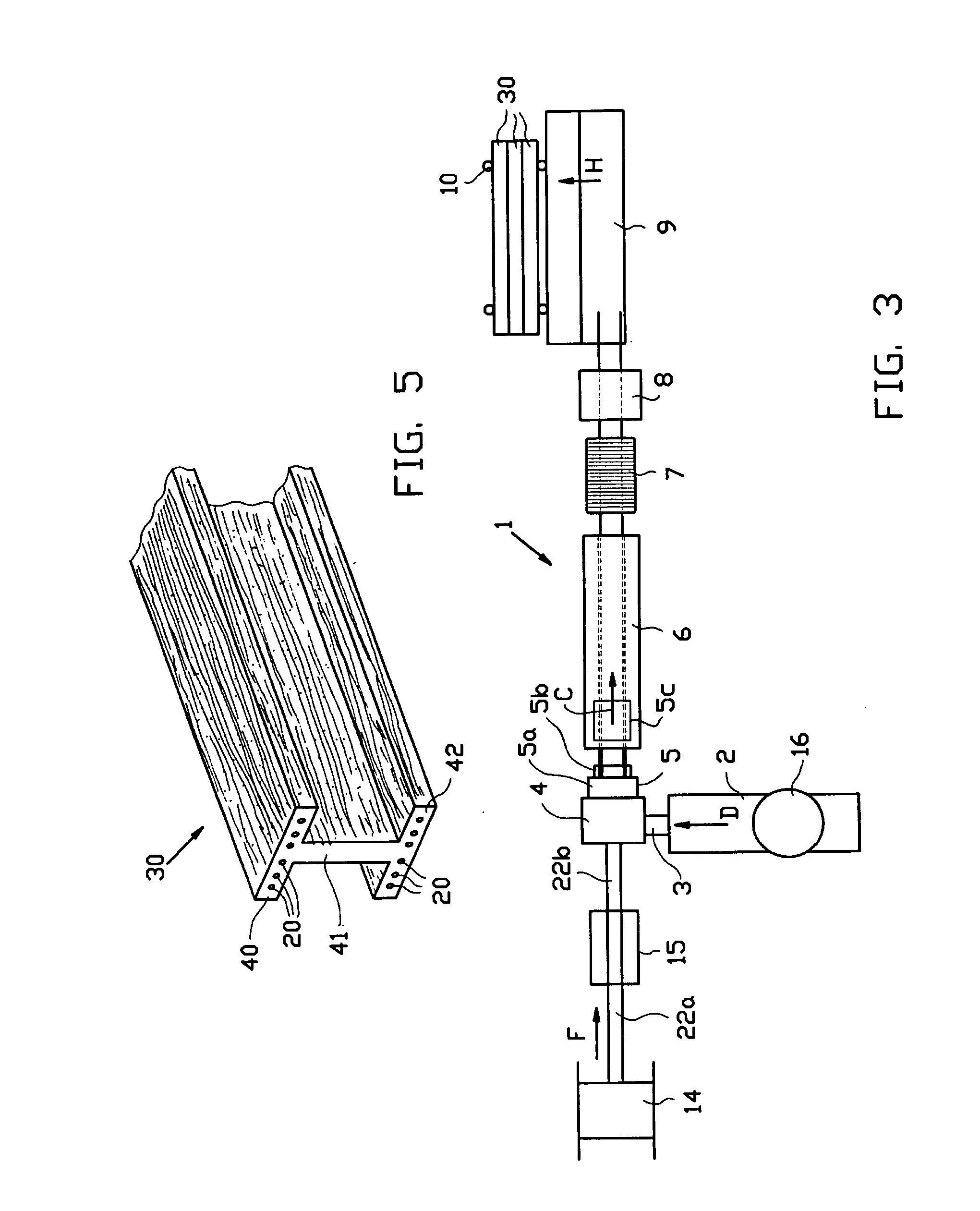Reinforced profile
a technology of reinforced profiles and profiles, applied in the field of reinforced profiles, can solve the problems of increasing the bending strength the need for covering or cladding, and the elastic instability of the construction element, so as to improve the adapted position, the compression strength of the compound element is increased, and the rigidity against bending can be increased.
- Summary
- Abstract
- Description
- Claims
- Application Information
AI Technical Summary
Benefits of technology
Problems solved by technology
Method used
Image
Examples
Embodiment Construction
[0036] The set-up shown in FIG. 1 comprises an installation 1 comprising a pushtruder 2 having a feed 16, which via intermediate flange 3 merges into extrusion die 4. A fibre-orientating device is incorporated in the extrusion die 4. Downstream of the extrusion die 4, immediately contiguous to it, a shaping unit 5 is placed, wherein cooling facilities have also been incorporated. The shaping unit 5 comprises a pre-shaping die 5a, in which the profile is substantially shaped, and a cooling / shaping die 5b attached to the die 5a, in which the shape is further established. Downstream of the shaping unit 5 a post-cooling unit or tank 6 is positioned, in which optionally a further cooling / calibrating die 5c may be positioned, immersed in the coolant in the cooling unit or tank 6, at the upstream end thereof. Furthermore a tension control unit 7 is positioned, and downstream thereof there is a sawing unit 8. Downstream thereof a discharge table 9 is positioned, from where cut to length ele...
PUM
| Property | Measurement | Unit |
|---|---|---|
| length | aaaaa | aaaaa |
| length | aaaaa | aaaaa |
| diameter | aaaaa | aaaaa |
Abstract
Description
Claims
Application Information
 Login to View More
Login to View More - R&D
- Intellectual Property
- Life Sciences
- Materials
- Tech Scout
- Unparalleled Data Quality
- Higher Quality Content
- 60% Fewer Hallucinations
Browse by: Latest US Patents, China's latest patents, Technical Efficacy Thesaurus, Application Domain, Technology Topic, Popular Technical Reports.
© 2025 PatSnap. All rights reserved.Legal|Privacy policy|Modern Slavery Act Transparency Statement|Sitemap|About US| Contact US: help@patsnap.com



